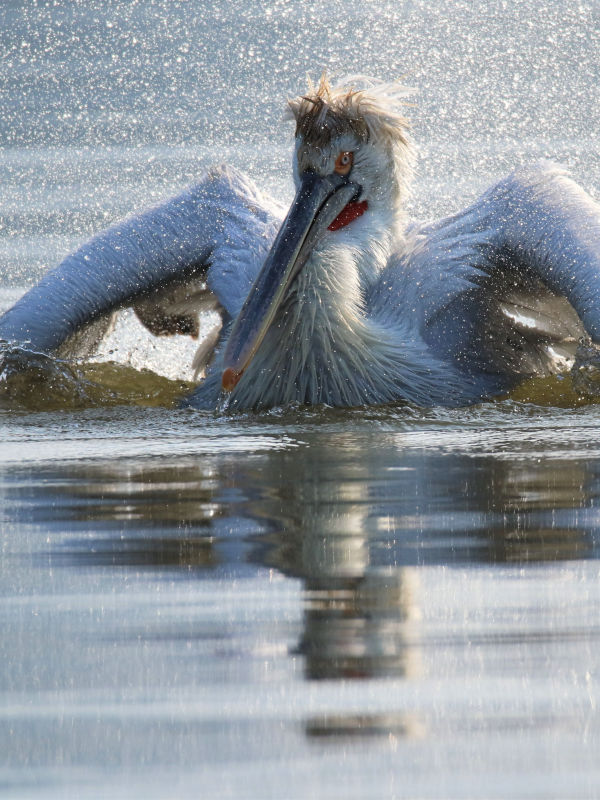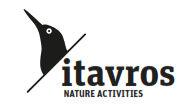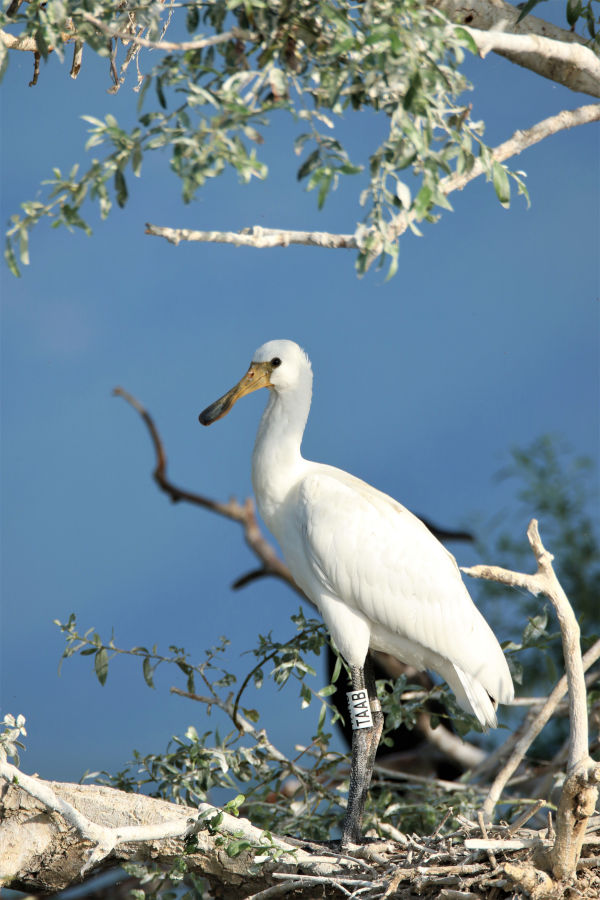Birdwatching
Birdwatching
With more than 312 so far recorded bird species, Lake Kerkini National Park offers great birding year-round. In spring, a huge heronry of 10 species (including Spoonbill, Glossy Ibis, Squacco, Purple and Night Heron, Pygmy Cormorant, etc.) and up to 9000 pairs forms in the north of the lake. Next to them, Whiskered and Black Terns nest on floating leaves of White Water-lilies. Other important breeding species include Black and White Stork, Lesser Spotted, White-tailed and the Booted Eagle. Also Dalmatian and Great White Pelicans are resident species, breeding successfully on artificial platforms (close to 300 pairs).
Many thousands of waterbirds overwinter at the lake, among them rare Lesser White-fronted Goose every winter from October to March. This is the most important wintering areas for them, attracting the entire Scandinavian population (c. 140 birds). Overwintering raptors include Greater Spotted, Golden and Imperial Eagles. Greater Flamingos stay at the lake in their thousands. Kerkini is one of the most important wintering areas throughout Europe. Also, there are more than 44 species of mammals: Otter, Wildcat, Grey Wolf, Beech Martens, Wild Boar and Golden Jackal.

With more than 312 so far recorded bird species, Lake Kerkini National Park offers great birding year-round. In spring, a huge heronry of 10 species (including Spoonbill, Glossy Ibis, Squacco, Purple and Night Heron, Pygmy Cormorant, etc.) and up to 9000 pairs forms in the north of the lake. Next to them, Whiskered and Black Terns nest on floating leaves of White Water-lilies. Other important breeding species include Black and White Stork, Lesser Spotted, White-tailed and the Booted Eagle. Also Dalmatian and Great White Pelicans are resident species, breeding successfully on artificial platforms (close to 300 pairs).
Many thousands of waterbirds overwinter at the lake, among them rare Lesser White-fronted Goose every winter from October to March. This is the most important wintering areas for them, attracting the entire Scandinavian population (c. 140 birds). Overwintering raptors include Greater Spotted, Golden and Imperial Eagles. Greater Flamingos stay at the lake in their thousands. Kerkini is one of the most important wintering areas throughout Europe. Also, there are more than 44 species of mammals: Otter, Wildcat, Grey Wolf, Beech Martens, Wild Boar and Golden Jackal.
The maximum length of the Lake Kerkini Lake 10.5 mi (17 km) from north to south, but a drivable circular birding route around it has 70 km and takes most of a day. The bird-richest north-eastern sector of the lake is reachable in less than 15 minutes drive from the Limneo Lodge. In a spring week it is possible to observe more than 150 species — Black-headed and Rock Buntings, Isabelline Wheatear, Calandra Lark, Tawny Pipit, Rock Nuthatch, SombreTit, Masked and Woodchat Shrikes; Grey-headed and Syrian Woodpeckers among them.
After so many years of almost daily presence at the lake, both by boat and car, I realized that the presence of visitors in the area prevents poaching and other wrong-doings. So you are welcome to enjoy the nature of Lake Kerkini and help the local community. Ecotourism – birding, butterflying, botanizing is the strongest development incentive in the national park. Leave the organization to us and be sure that we will do everything possible for you to have a great time. If you are interested in more detailed information, please contact us at info AT limneokerkini DOT gr and itavros AT yahoo DOT com
Autumn migration (September – late October/early November)
First Swan, Geese and duck Species arrive with most noteworthy to mention the Lesser White Fronted Geese flock that spends the half winter period in the lake area.
Winter (late November – late February/early March)
Spring (late March – late May/early June)
White Pelicans flocks arrive to spend the summer but not to breed. The riparian forest now is full of nesting Cormorants, Pygmy Cormorants, Herons and Egrets, Spoonbills as well as the 2 artificial platforms and 1 big island for the Dalmatian Pelicans for their breeding.




